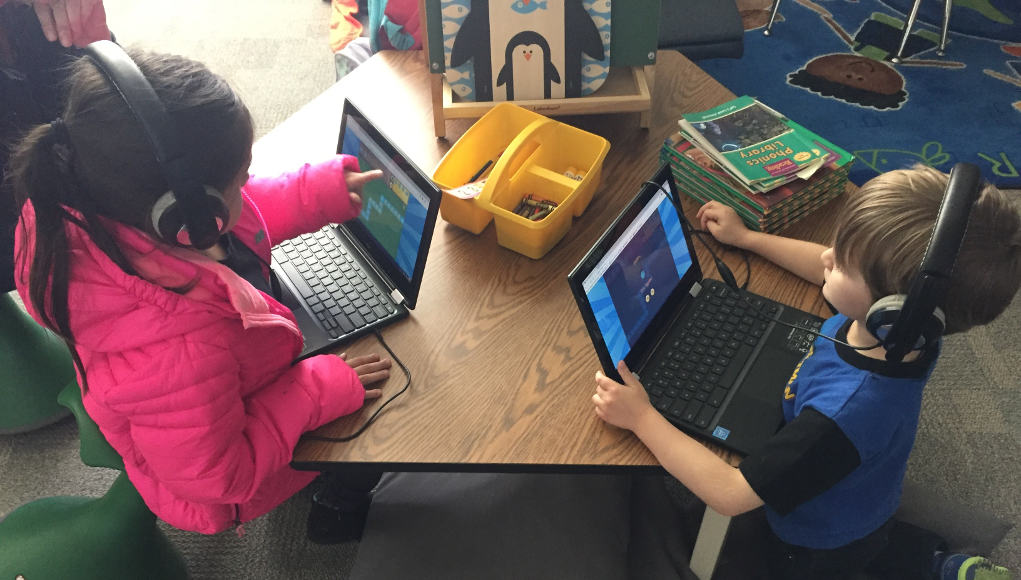3 Ways to Connect to Students with Emotional Challenges

By Jamie Reese
The students I work with at Mountain View Elementary range from kindergarten to third grade, and come to me with emotional challenges from mood disorders to PTSD. Some of them are on the autism spectrum. There isn’t one particular type of kid; they all arrive with their own challenges and it’s up to us, the teachers, to figure out how to give each student the attention and help they need, while at the same time maintaining classroom order. One of the best ways to do this is by putting the students first.
In recent years, Simi Valley Unified School District has started making the switch to student-centered classrooms. This meant shifting our focus from the faculty’s goals to what the students needed in order to succeed. Within Simi Valley Unified, Mountain View Elementary is known as an interactive technology school. Whenever the district is considering testing out a new program or tech, they run it through us first.
Last year, Phil Scrivano (our IT Director), Jennifer Goldman, my principal and I all agreed that classroom sound systems could be very beneficial, specifically for our kids with emotional difficulties. So after attending a technology conference to see some of the options, we decided to launch a pilot of Lightspeed Technologies’ Topcat (a ceiling-mounted speaker) and their Flexcat portable two-way communication pods. The pilot ran from February 2016 to May 2016.
Because the system dispersed my voice evenly throughout the room, my kids could now hear me more clearly, which helped our students who were deaf and hard of hearing, but also made a significant difference to all kids in my classroom. They didn’t have to work as hard to pay attention, and could feel as if I was right beside them, talking to each student individually.
Inspired by my experience with this audio system, I developed three best practices that I can recommend to teachers looking to create a happy, productive classroom for students with emotional difficulties:
- Establish a calm, friendly environment. Using the speaker to send my voice clearly to any spot in the room means that I don’t need to raise my voice for behavior intervention which, in the past, could upset some of our students. The speaker also allows me to diffuse calming music throughout the classroom, which creates a peaceful atmosphere that helps everyone relax and feel safe.
- Respect boundaries and promote student independence. The pods allow my students to seek out privacy when they need it, while still engaging in the lesson at hand. Students with emotional challenges, especially the younger kids, are often exceptionally shy. So, in order to help promote independence and security, we have a “chill out” space in our classroom. It’s an attached area with an igloo mural painted on the wall where students can go without actually leaving the room. By taking one of the wireless Flexcat pods with them, they can still be productive and engaged in the lesson, hearing everything I say and chiming in with questions or answers if they have them.
- Build a trusting relationship between you and your students. Many of our kids have developed a lot of mistrust when it comes to school personnel. I’ve found there are several ways to re-build that trust, from simply being aware of their body language and making their interests your own, to communicating to them that when they do misbehave that it doesn’t make them bad kids. “You are not your behavior,” I often say. Once the defensive barriers are removed, teachers and students can go forward with building trust. One way we establish a system of trust is having students use the microphone for classroom presentations. The mic helps the kids feel important.
A powerful example that combined all three of these best practices happened a few years ago, when I had a “selective mute” student. He didn’t talk his first year, and only nodded yes or no to questions. He improved with time, saying a word or two in class, but using a very soft and young-sounding voice that his mother said was not his normal voice.
When I gave him the microphone to speak into though, he found that the device allowed him to make the same amount of effort he did when speaking softly—but the whole class heard him and paid attention to what he said. It gave him a reality check: nothing bad would happen to him if he used his voice. The last time I had students do presentations, he stood on stage and presented his speech, completely memorized.
As I stated before, there is no “typical student” in my classroom. They all have their own unique challenges, histories and personalities. That’s why our district has embraced the student-centered classroom, and why I make it a priority that every student can hear and be heard.
For more, see:
- 7 Apps for Working with Special Needs Students
- 3 Visions of Truly Inclusive Education
- Getting Personalized Learning Right the First Time
Jamie Reese is a K-3 teacher at Mountain View Elementary in Simi Valley, CA. Follow her on Twitter: @teachermsjamie.
Stay in-the-know with all things EdTech and innovations in learning by signing up to receive the weekly Smart Update.







0 Comments
Leave a Comment
Your email address will not be published. All fields are required.